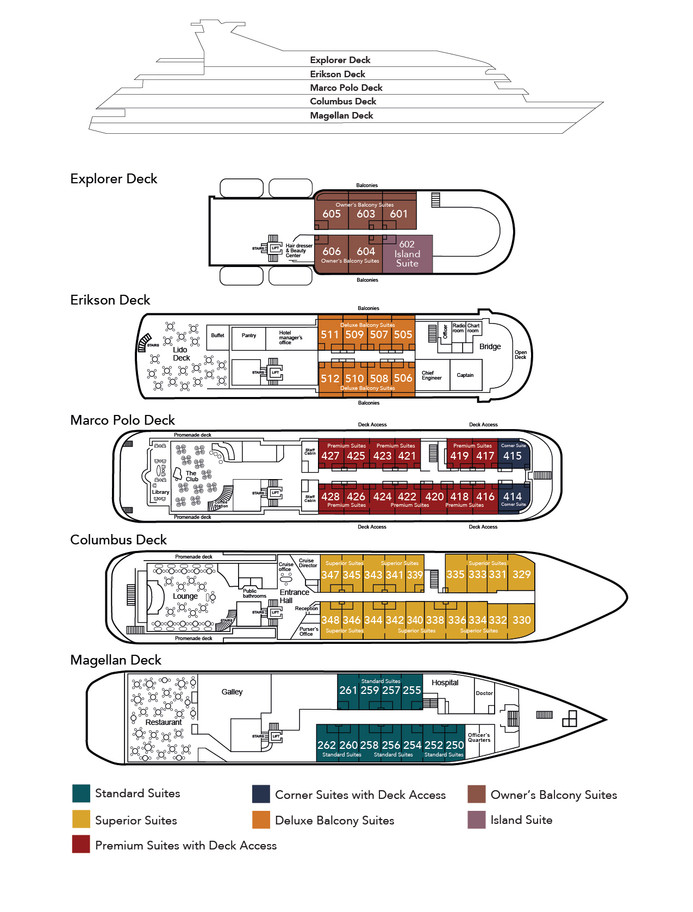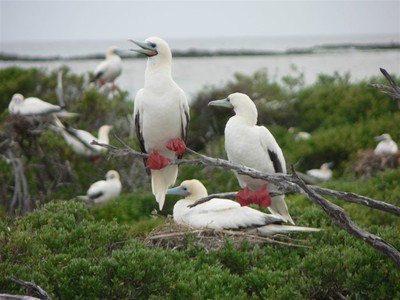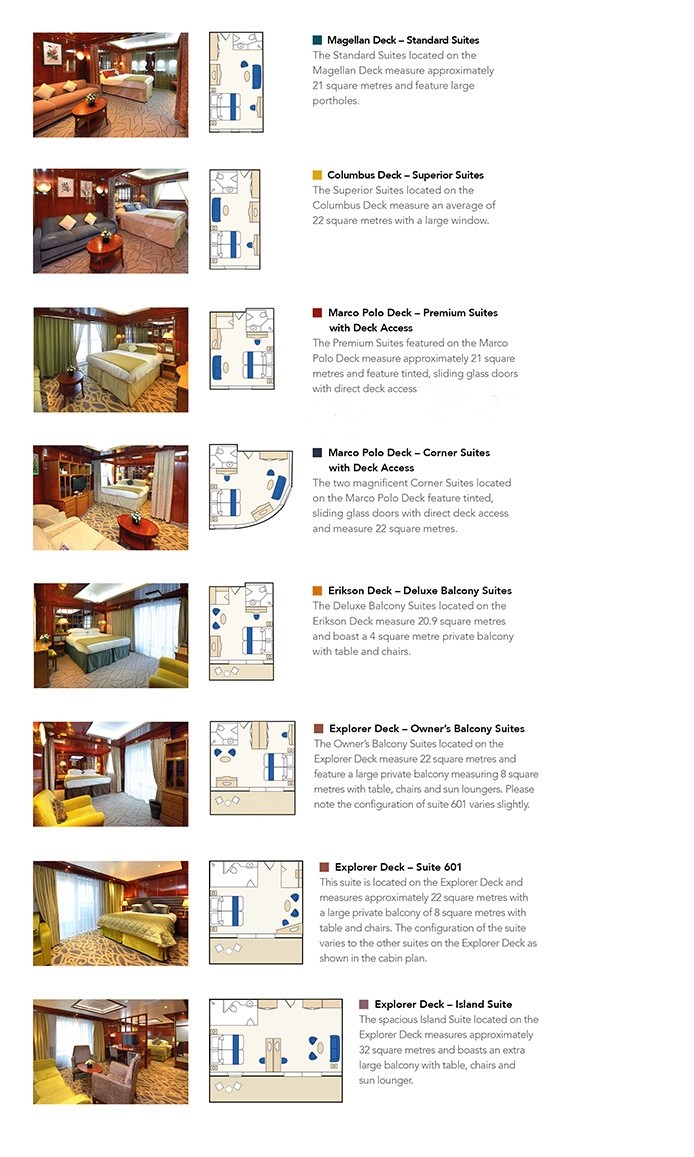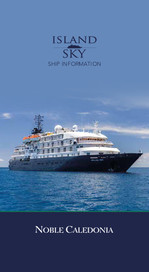
The Seychelles offers the visitor a tropical beauty that is difficult, if not impossible to match anywhere else in the world. Spread out over a vast area of the Indian Ocean, they offer everything from quiet sophistication and enchanting scenery to wild and uninhabited nature reserves, where the very remoteness of the islands has protected them from the worst excesses of mankind. We know the region well having operated vessels there for almost thirty years and if ever there was a region perfect for expedition cruising it is here, a timeless world of wonders both below and above the water.
Setting sail from Tanzania, we have a full day to explore atmospheric Zanzibar before we spend time discovering Latham Island, an important seabird breeding site with spectacular reefs, and the historic sites of Kilwa Kisiwani. Continuing to the Seychelles, our journey will include all aspects of this extraordinary island nation from the lesser known and rarely visited Outer Seychelles where we visit the Aldabra Islands, the world’s largest coral atoll and a World Heritage Site to the developed Inner Seychelles with staggeringly beautiful islands such as Aride and Praslin. For many the highlight of the voyage will be our time spent exploring the Aldabra Island Group, the breeding ground of the giant tortoise and in addition to seeing some of these endearing creatures we should also encounter dolphins and turtles as well as countless birds including the flightless rail. To explore the abundant crystal clear waters of the vast lagoon and to set foot on atolls which have never been exploited by the hand of man is a rare experience.
Obviously, such beauty and serenity are best enjoyed with a small number of travelling companions and the MS Island Sky is an ideal vessel. With a maximum of just over 100 passengers she ofers all the comforts of a larger vessel but with the added luxury of a small number of fellow, like-minded travellers and an expert expedition team who will add much to your enjoyment. With our fleet of Zodiacs we can reach the unreachable, landing on remote beaches, walking through verdant rainforest and national parks and getting close to some unique flora and fauna.
-
What to Expect
 Flexibility is the key to an expedition cruise; sometimes the whole day’s schedule will be changed to maximise your experience, something that would not be possible on a large cruise ship. Each day holds something new and below is an extract from the ship’s log of a previous expedition which will provide you with an idea of what to expect.
Flexibility is the key to an expedition cruise; sometimes the whole day’s schedule will be changed to maximise your experience, something that would not be possible on a large cruise ship. Each day holds something new and below is an extract from the ship’s log of a previous expedition which will provide you with an idea of what to expect.Cosmoledo: It was an early start today due to the tide times and at 7:30am the flotilla of Zodiacs made the journey into the mouth of the atoll, across the lagoon to the eastern shore. Once we arrived the site was wondrous with thousands of nesting birds sitting on the coral rock. They were mostly boobies, both red footed and masked, but there were also species of herons, terns, noddies, frigate birds and tropic birds. The sea was also full of turtles - there seemed to be hundreds darting about in the shallow water. The Zodiacs took their time passing up the shore, allowing plenty of bird photos to be taken. We then found little patches of beach to land on and to have a small walk about or a little swim or paddle. All the while the tide was quickly dropping and the beaches were becoming larger and larger. Soon it was time to head back to the ship and set sail for the Farquhar Group of islands. Once back aboard we enjoyed lunch, followed by a great talk all about the biology of coral reefs.
Aride: The intrepid birders set out early and were rewarded with the sight of birds that were totally unafraid of man, many of them at very close range. The birds were certainly friendly as were the two species of skink. White-tailed tropicbirds swooped through the woodland and crash-landed in the shrubbery on their way to their nests, their landing technique a stark contrast to their grace in flight. The fairy terns sat on their branches and met us eye to eye. Most people got to see the fluffy little chicks, hatched on a bare branch and now moving around, waiting for their feathers to grow so that they could fly. Seychelles fodies were everywhere while common moorhens ran around in the undergrowth, far away from water.
La Digue: This afternoon we were back in our trusty Zodiacs for a short ride to a very civilised landing on a floating pontoon inside the busy little harbour at La Digue. Here we boarded our camionettes, converted trucks with seats in the back, for our tour of the island. The more adventurous among us boarded bicycles and headed off to explore independently. We drove through the little village of La Passe, full of weaving bicycles, to the l’Union Estate where we were shown all the processes used in exploiting the coconuts, from dehusking to the copra kiln and the coconut oil mill, powered by a very patient and placid bull. We were also taken to the original old plantation house. We clambered back aboard our camionettes for a short ride to the beach at L’Anse Source d’Argent for a swim. The beach is famous, much photographed because of the dramatic contrast of rugged granite boulders, white sand and clear blue sea.
Island Sky
The MS Island Sky is one of our two flag ships and sister vessel to the MS Hebridean Sky. Both vessels were built in the same ship yard in Italy at similar times and share the same excellent attributes that make them two of the finest small ships in the world.
Itinerary
Day 1 London or Manchester to Dar es Salaam, Tanzania.
Fly by scheduled indirect flight.
Day 2 Dar es Salaam.
Arrive today and transfer to the MS Island Sky. Enjoy welcome drinks and dinner as we sail this evening.
Day 3 Zanzibar.
Zanzibar’s harbour, crowded with dhows, very much sets the scene for our visit to this Arab-style city with its long narrow streets, bazaars, houses with overhanging balconies and intricately carved doorways. On a morning walking tour, soak up the timeless atmosphere of Stone Town including Livingstone House, Sultan’s Palace, the slave market and the Old Fort. The afternoon is free to relax and explore independently or join a tour of a spice farm to experience the various fruits and spices cultivated on the island. Alternatively, travel to Jozani Forest which sustains a variety of wildlife and birds, including the rare red colobus monkey, indigenous to the island.
Day 4 Latham Island.
Also known as Fungu Kizimkazi, this uninhabited coral island measures just 7.5 acres but is an important breeding ground for many bird species and one of the most important areas in the Indian Ocean for masked booby, brown noddy, sooty tern and greater crested tern. Weather permitting, we will use our Zodiacs to cruise the island to view these colonies and also offer the chance to snorkel on the fringing reef surrounding the island.
Day 5 Kilwa Kisiwani.
This morning we anchor off Kilwa Kisiwani, a site of exceptional historical interest, where the atmospheric ruins represent a wide sweep of East African coastal history, from the heights of the Swahili and Shirazi trading civilisation to the darker days of slavery and the uprisings against German rule. Once one of Africa’s wealthiest towns, Kilwa Kisiwani is now a UNESCO World Heritage Site and contains the world’s most extensive and best-preserved Swahili ruins. We will spend the morning on a walking tour and see the prominent fort and the Great Mosque which stood at the heart of this ancient city which was once the largest in East Africa. This afternoon we hope to find a local beach to offer the chance to swim, snorkel or take a stroll.
Day 6 At Sea.
Spend a leisurely day on board as we continue our journey through the Indian Ocean en-route to the Seychelles.
Days 7 to 9 Aldabra Islands, Seychelles.
Arriving in the Outer Seychelles we have two and a half days to enjoy the Aldabra group of islands and our itinerary will be in the hands of our Expedition Leader and Captain who will monitor the local conditions to ensure we maximise our time here. Whilst our itinerary is flexible, we hope to call at the island of Assumption which was ruthlessly plundered for its vast deposits of guano in the early 20th century. Happily, peace has returned and the wildlife of rare birds and green turtles are once again in abundance. Our time here will be spent beachcombing, on nature walks or snorkelling. We also hope to reach Cosmoledo where a huge ring of twelve islands circle a lagoon. Many of the atolls are still to be surveyed and we will explore some of them by Zodiac. This is an Important Bird and Biodiversity Area with all three species of booby found in the Seychelles including the last breeding site for the brown booby. Also spot sooty terns and great frigate birds. In addition we will plan time on Aldabra, the island referred to by Sir Julian Huxley as “One of nature’s treasures and should belong to the whole world”. Aldabra is unique and every time we call we find something new of interest. Our exploration will be guided by the tides and sightings have been made of the extremely rare white throated rail and the atoll is also home to the world’s second largest colony of frigate birds and to the largest crab, the coconut crab. Whilst exploring by Zodiac it is difficult to know in which direction to look. The clear blue seas abound with life, the skies are alive with varied birdlife and ashore giant land tortoises forage as they have done for millions of years. We hope to explore Picard Island with a short walk to see some of the numerous tortoises and robber crabs or swim in the lagoon, a vast 17 mile stretch of shallow clear water. From our Zodiacs we can watch the ever-changing undersea world and snorkel in colourful coral waters.
Day 10 Farquhar Group.
This morning we anchor off Farquhar where we will use our Zodiacs to explore the sparkling lagoon of this remote atoll and its islands covered in coconut trees, palms and scaevola sea lettuce plants. Hawksbill and green sea turtles come to the atoll to nest and several of the Farquhar Group’s islands are Important Bird and Biodiversity Areas. The island is a haven providing us with a delightful morning of bird watching or snorkelling before we sail this afternoon.
Day 11 Alphonse Islands.
There are three islands in the Alphonse group and as we approach the islands over lunch you will understand why they are regarded by many to be the most beautiful of the 115 islands in the Seychelles archipelago. Our plan is to land on the tiny and idyllic island of Bijoutier. Rarely visited, it is a safe haven for a variety of seabirds. There will be the opportunity to swim and we hope to offer a snorkel platform in the crystal clear waters. Bijoutier sits between two larger atolls so the ocean current flows passing Bijoutier replenishing the corals reefs and making them especially rich in biodiversity.
Day 12 Amirante Islands.
This morning we arrive at the 28 islands in the Amirante Group which were discovered by Vasco de Gama in 1501 and are considered to be some of the most pristine and untouched islands in the world. If conditions permit we will visit the huge sand spit on African Banks and join nature walks with our naturalists, beachcombing and spotting seabirds. In addition we hope to offer Zodiacs cruises in the lagoon of one of the atolls and also the opportunity for swimming and snorkelling.
Days 13 & 14 Inner Seychelles.
Our final two days are spent in the Inner Seychelles islands where we hope to visit Aride, one of the finest and most important seabird islands in the Indian Ocean. Over one million seabirds breed on the island including tropical shearwater, lesser noddy, frigatebirds and roseate tern and also five species unique to the Seychelles such as the Seychelles warbler and Seychelles magpie robin. The island is largely covered in native woodland including the endemic Wright’s gardenia, a shrub with beautifully scented flowers found nowhere else in the world. We plan to land on Curieuse, a rugged island which was once home to a leper colony and now houses an eco-museum and visitor centre. The island is an important nesting site for hawksbill turtles and boasts endemic vine and mangroves which we explore on an island walk. Meanwhile on La Digue, huge granite boulders lie like giant sculptures on the brilliant white beaches of the island. Maybe visit the forested nature reserve and the L’Union Estate, a superbly restored 19th century colonial house, or swim from one of the beaches.
Day 15 Mahe to London or Manchester.
Disembark this morning and transfer to the airport for our scheduled flight.
Day 16 London or Manchester.
Arrive this morning.
Dates and Prices
| 16 to 31 January 2026 | ||
|---|---|---|
| Category | Brochure Price | Special Offer Price |
| Magellan Deck Standard Suites | £10495 | £9995 |
| Columbus Deck Superior Suites | £10795 | £10295 |
| Marco Polo Deck Premium Suites | £11095 | £10595 |
| Marco Polo Deck Corner Suites | £11495 | £10995 |
| Erikson Deck Deluxe Balcony Suites | £12795 | £12295 |
| Explorer Deck Owner's Balcony Suite | £13295 | £12795 |
| Explorer Deck Island Suite | £13795 | £13295 |
| Magellan Deck Standard for sole occupancy | £12495 | £11995 |
| Columbus Deck Superior for sole occupancy | £12795 | £12295 |
Tour Reference Code: SCISK160126
PRICE INCLUDES: Economy class scheduled air travel • 13 nights aboard the MS Island Sky on a full board basis • House wine, beer and soft drinks with lunch and dinner • Noble Caledonia expedition team • Shore excursions • Gratuities • Transfers • Airport taxes • Port taxes.
Not Included: Travel insurance, Tanzanian visa.

During this expedition you will be visiting out of the way destinations and will be accompanied by an expedition team. Landings and excursions will be made by Zodiac landing craft. The use of Zodiacs will be key to the operation of the itinerary as shown. If you have any queries pertaining to the use of Zodiacs or the level of fitness required for this voyage, please do not hesitate to ask one of our experienced travel consultants.
-
Deckplan
Island Sky
The MS Island Sky is one of our two flag ships and sister vessel to the MS Hebridean Sky. Both vessels were built in the same ship yard in Italy at similar times and share the same excellent attributes that make them two of the finest small ships in the world.
Skys Video Tour
Video Library
Skys Video Tour
What to Expect
 Flexibility is the key to an expedition cruise; sometimes the whole day’s schedule will be changed to maximise your experience, something that would not be possible on a large cruise ship. Each day holds something new and below is an extract from the ship’s log of a previous expedition which will provide you with an idea of what to expect.
Flexibility is the key to an expedition cruise; sometimes the whole day’s schedule will be changed to maximise your experience, something that would not be possible on a large cruise ship. Each day holds something new and below is an extract from the ship’s log of a previous expedition which will provide you with an idea of what to expect.
Cosmoledo: It was an early start today due to the tide times and at 7:30am the flotilla of Zodiacs made the journey into the mouth of the atoll, across the lagoon to the eastern shore. Once we arrived the site was wondrous with thousands of nesting birds sitting on the coral rock. They were mostly boobies, both red footed and masked, but there were also species of herons, terns, noddies, frigate birds and tropic birds. The sea was also full of turtles - there seemed to be hundreds darting about in the shallow water. The Zodiacs took their time passing up the shore, allowing plenty of bird photos to be taken. We then found little patches of beach to land on and to have a small walk about or a little swim or paddle. All the while the tide was quickly dropping and the beaches were becoming larger and larger. Soon it was time to head back to the ship and set sail for the Farquhar Group of islands. Once back aboard we enjoyed lunch, followed by a great talk all about the biology of coral reefs.
Aride: The intrepid birders set out early and were rewarded with the sight of birds that were totally unafraid of man, many of them at very close range. The birds were certainly friendly as were the two species of skink. White-tailed tropicbirds swooped through the woodland and crash-landed in the shrubbery on their way to their nests, their landing technique a stark contrast to their grace in flight. The fairy terns sat on their branches and met us eye to eye. Most people got to see the fluffy little chicks, hatched on a bare branch and now moving around, waiting for their feathers to grow so that they could fly. Seychelles fodies were everywhere while common moorhens ran around in the undergrowth, far away from water.
La Digue: This afternoon we were back in our trusty Zodiacs for a short ride to a very civilised landing on a floating pontoon inside the busy little harbour at La Digue. Here we boarded our camionettes, converted trucks with seats in the back, for our tour of the island. The more adventurous among us boarded bicycles and headed off to explore independently. We drove through the little village of La Passe, full of weaving bicycles, to the l’Union Estate where we were shown all the processes used in exploiting the coconuts, from dehusking to the copra kiln and the coconut oil mill, powered by a very patient and placid bull. We were also taken to the original old plantation house. We clambered back aboard our camionettes for a short ride to the beach at L’Anse Source d’Argent for a swim. The beach is famous, much photographed because of the dramatic contrast of rugged granite boulders, white sand and clear blue sea.
Also of Interest
Passage through the Seychelles
Island Hopping through the beautiful Seychelles aboard the MS Hebridean Sky
Hebridean Sky
Itinerary at a glance
- Dar es Salaam / Zanzibar / Kilwa Kisiwani / Aldabra / Farquhar Islands / Alphonse Islands / Amirante / Aride / Curieuse / Praslin / Grande Soeur / Mahe
Islands & Atolls of the Indian Ocean
A voyage from Mauritius exploring Madagascar, Aldabra & Tanzania aboard the MS Island Sky
Island Sky
Itinerary at a glance
- Mauritius / Reunion Island / Masoala National Park / Nosy Mangabe / Domaine de Bobangira / Diego Suarez / Nosy Hara / Aldabra Islands / Kilwa Kisiwani / Latham Island / Zanzibar / Dar es Salaam
Book with Confidence
Speak to one of our advisors on 020 7752 0000









